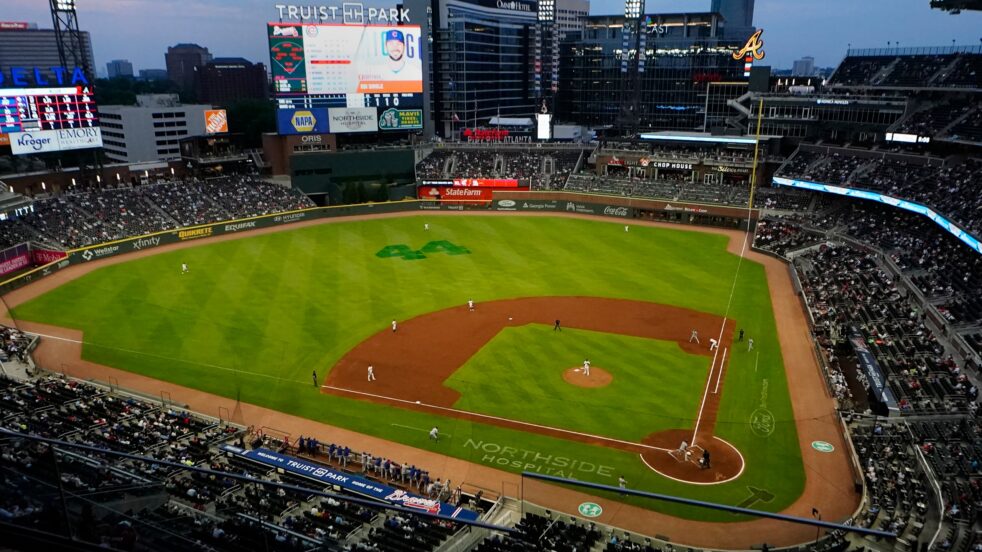Part of why baseball has such a dependable and measurable history is because the main structure hasn’t changed in ages. Any time the tiniest of changes is made to a rule or dimension on the field, it can feel like a mountain got moved in the baseball world.
The pitchers mound is the most frequent piece of baseball that gets altered when either pitchers or hitters gain too much of an advantage that it reduces the allure of the game. Even right now, independent leagues are experimenting with a mound moved beyond the MLB’s current 60’ 6’’.
Similarly, the core structure of a season of baseball has been relatively unchanged compared to other American sports leagues. Teams play 162 games a season from late March to early October before the postseason starts. As the league has grown, the postseason has gone through multiple models, the current including ten of the 30 teams. Every season since 1995 has included at least eight teams in the postseason. It is a reasonable model outside of the fact that a team that goes on a season-long tear can have their season end in three games because of a badly timed slump. It can be a total crapshoot in an otherwise acceptable system nonetheless.
162 games is not small, though. There are games every day around the league outside of the All-Star break. It is large enough that a player can have a significant injury and still come back. However, for fan enjoyment, I am not convinced this is the best number of games, record keeping and historical consistency aside.
For one, the inherent value of most games is minimal until September when the playoff push is happening. There are so many games, seasons turn into blurs. The COVID-19 shortened 60-game season was a thrill ride every night because games were worth so much more towards the playoffs. While the lack of crowds created an obvious hole in the experience, watching 60 straight must win games was exhilarating. The stakes simply were much higher inning by inning.
60 games though is far too short, because that in itself is a crapshoot. Teams that are ten games under .500 can still find a way to the postseason normally, but that’s essentially improbable with a shortened season like last year.
A system I have envisioned that I think has some real positives is a 112 game season played out over 28 four-game series. Games would be Thursday to Sunday, leaving Monday to Wednesday as practice and travel days, or weather makeup days. Leave the playoffs as is. The one-game Wild Card is super fun and is a good consequence of not winning a division.
Where I see 112 games working well is that it can reduce chances of injury, possibly elevate the level of play with more in-season practice, adds more importance per game, but also eliminates mid-week games that are generally hard for fans to get to or watch. Wednesday lunchtime games will never draw a crowd unless it is Wrigley Field, so why not just scratch them all together and use it as a valuable rest period?
112 games would be far easier to consume. The regular pattern of Thursday to Sunday builds anticipation similar to the football schedule for an upcoming series. It can turn the four game stretch to a four-day event.
112 still allows for every team to face the rest of the AL or NL, with room to play one division in interleague play. It would eliminate the chance to visit every stadium within a team’s league, but I actually enjoy that idea because it makes it a rarer opportunity to see certain teams.
The cons are that it very much could advantage pitchers. Starters would essentially have seven-days rest for every start. In theory, this eliminates spot-starts and position players pitching, which increases the pitching quality. But, fans come for home runs, not strikeouts. Relievers would essentially be available every game.
The part that pains me most is that shortening the season severely impacts the records. Gone are the 50 home run, 200 hit or 60 steal seasons. The ability to compare to over 100 years of incredibly consistent baseball statistics would fly out the window. New notable records would be reduced to those occurring in a single game. It is not an optimal choice from that angle.
On the business front, the owners would never agree to this proposal now because of the financial hit of losing a ton of home games, but I am not concerned about that for this thought experiment.
The amount of radical changes by baseball’s standards required to make this happen is a lot, but I do think finding a way to have a shorter season is going to be better for the long-term health of baseball. Finding the thrill in baseball in the May to August range is hard when games just don’t have the same weight as the oncoming of spring or the playoffs. At the very least, this 112 game idea creates a path of something different and way more exciting.
